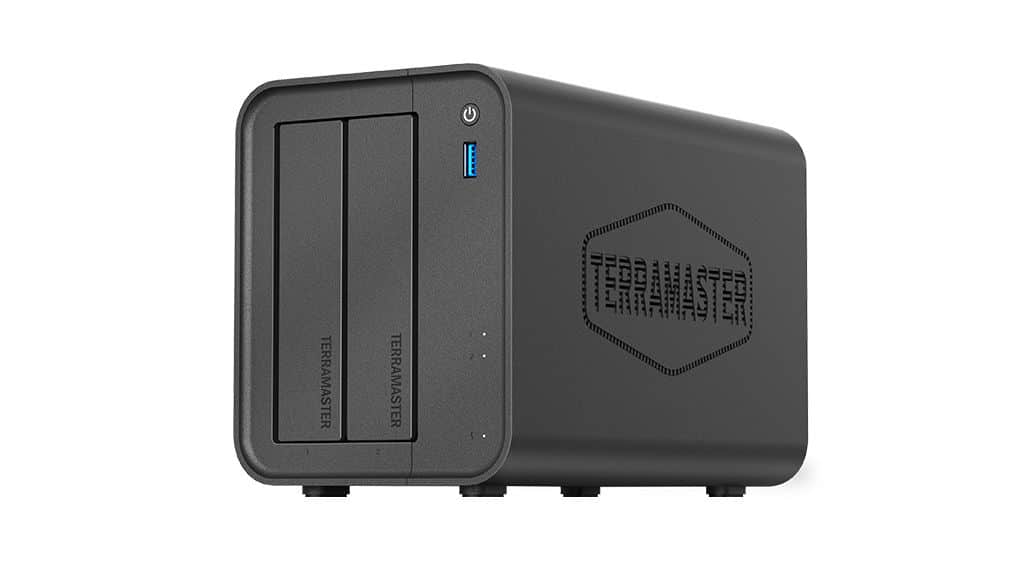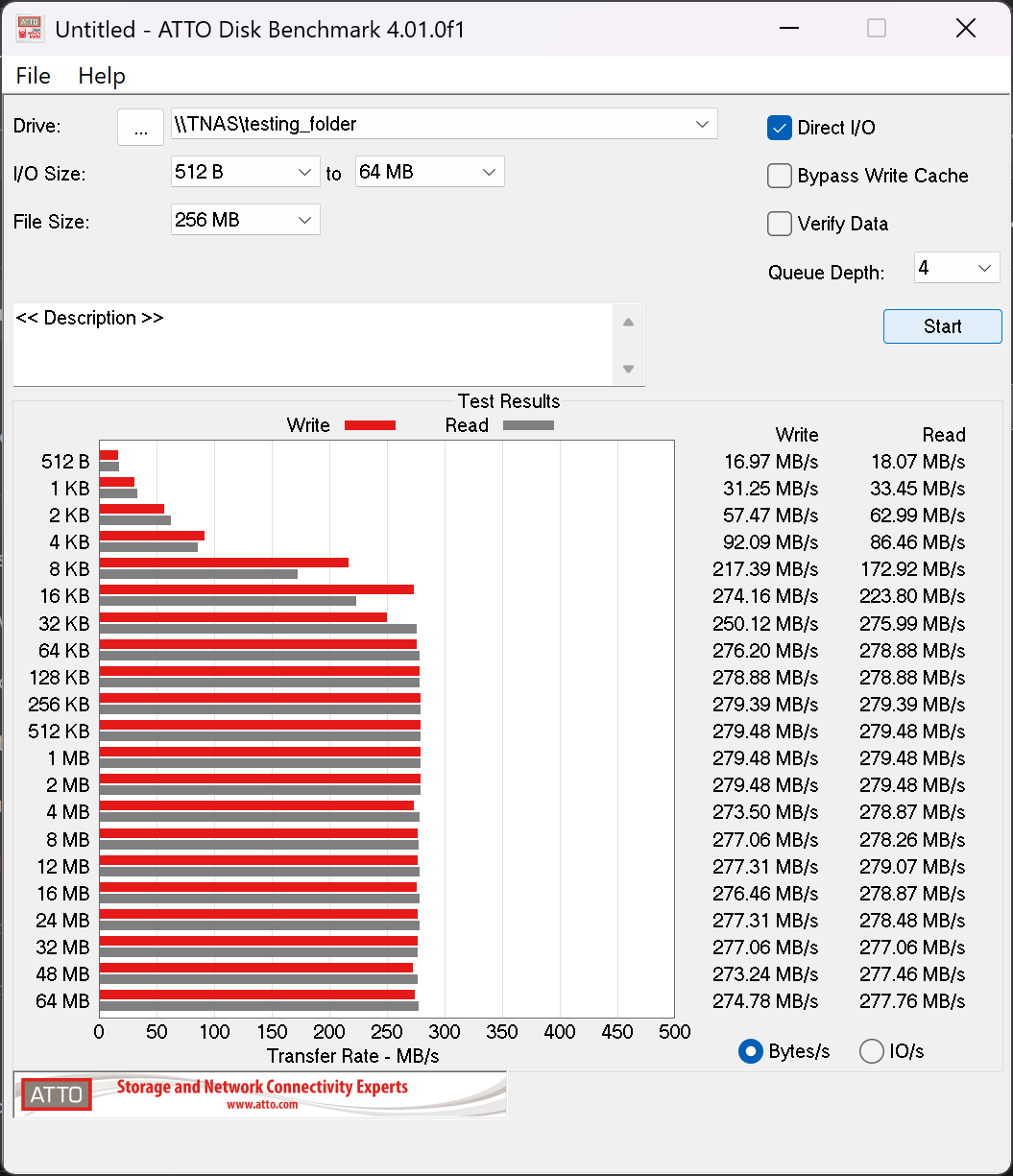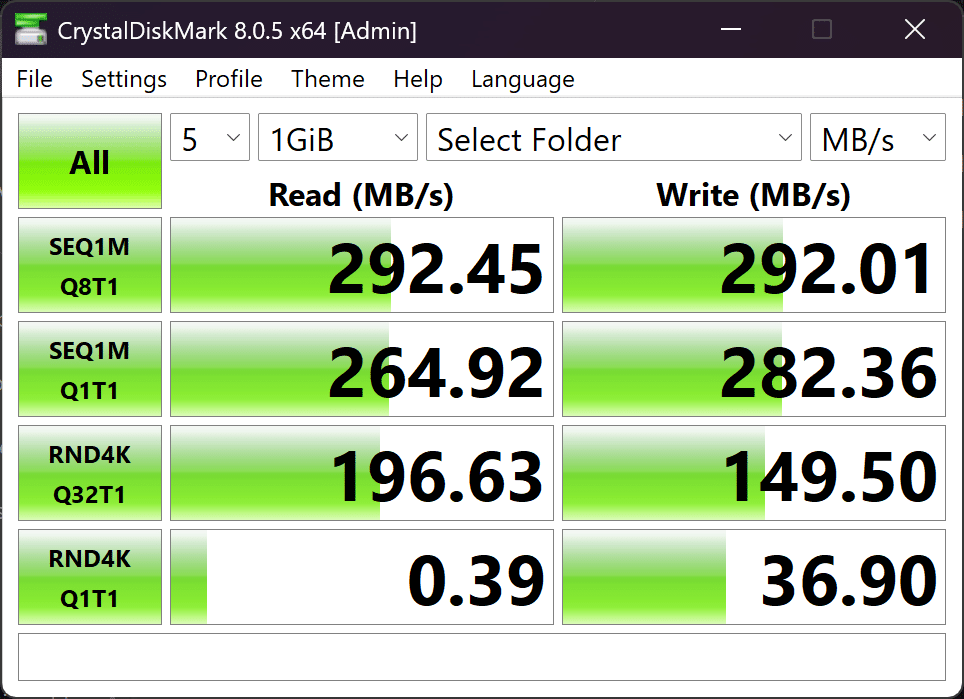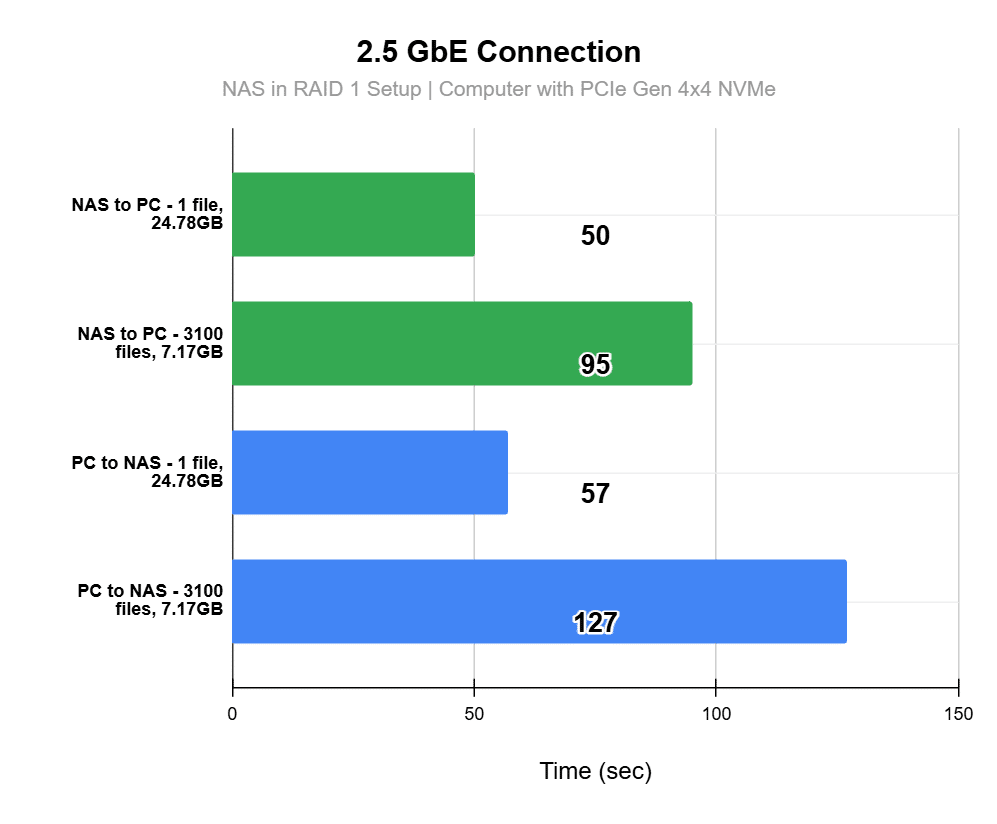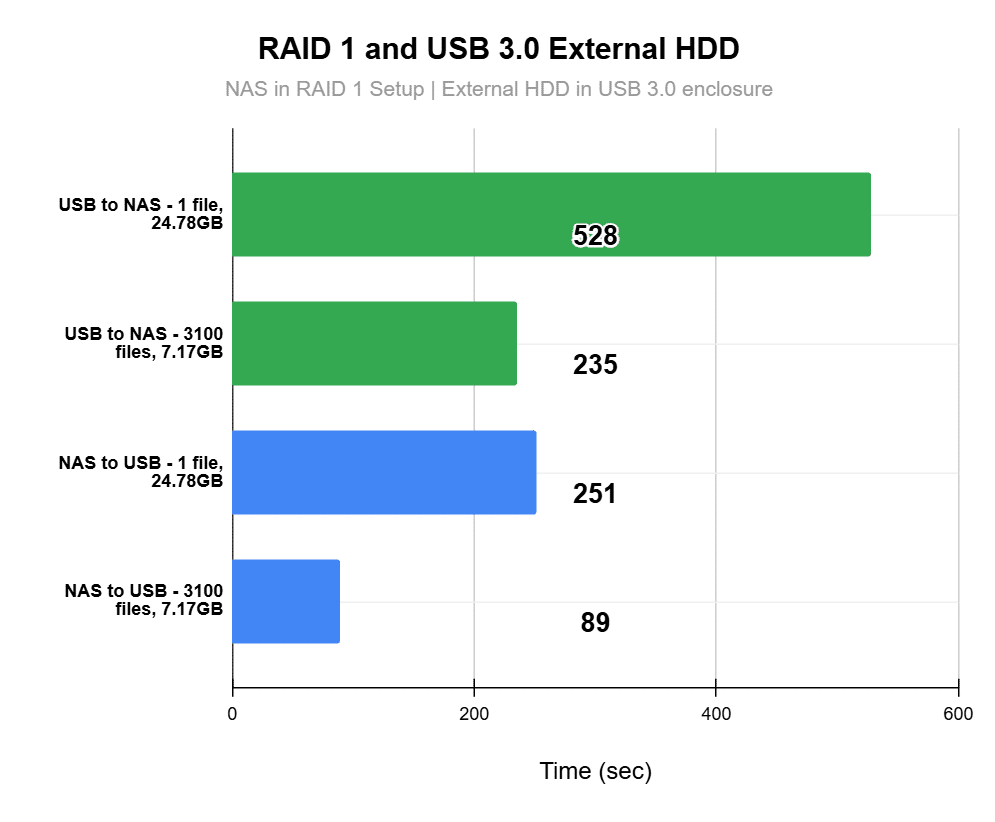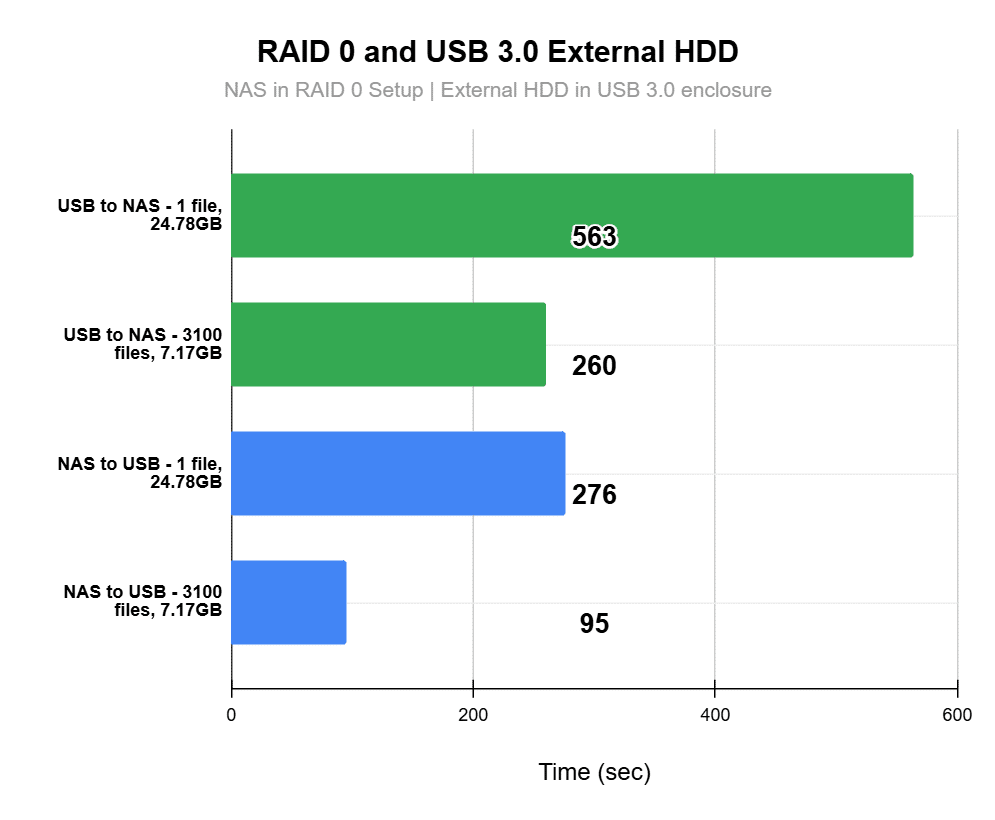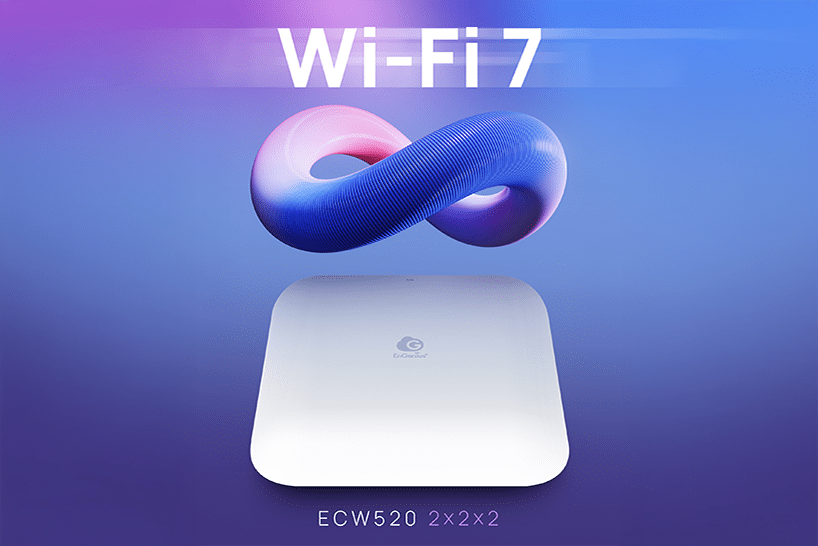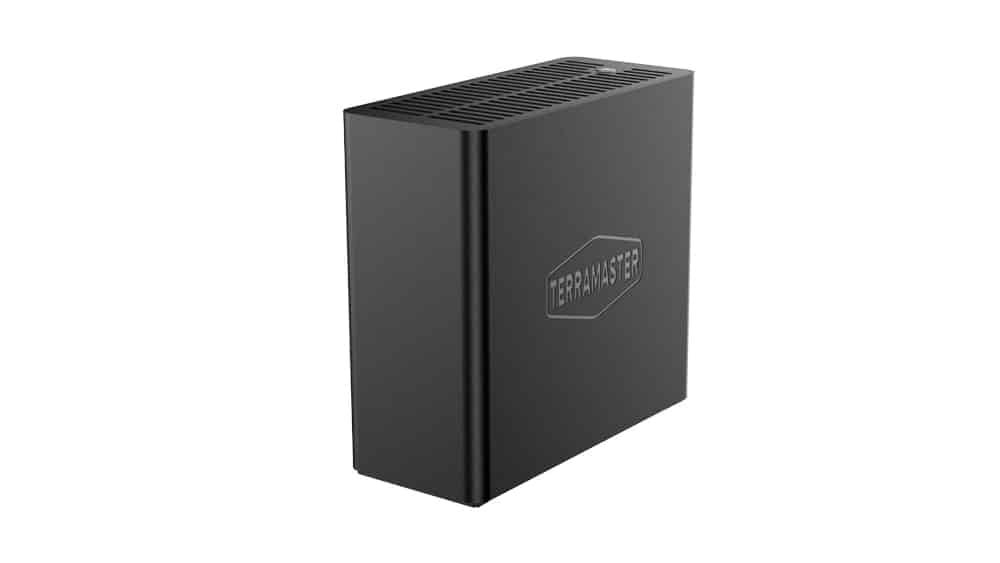Performance
Synthetic Benchmarks
ATTO & Crystal Disk Mark
To evaluate the performance of our NAS setup over a 2.5GbE connection, we used ATTO Disk Benchmark and CrystalDiskMark to run a series of read and write tests.
Since drive type or speed doesn’t make much difference at this network bandwidth, we ran the test with two SSDs set up in RAID 1, which seems like the most practical way to add some redundancy. In our testing, long sequential transfers easily maxed out the 2.5GbE connection in both directions; however, random operations were noticeably more challenging. Overall, it’s clear that at this network speed, the real bottleneck isn’t the storage device, but rather the network itself.
When testing transfer speeds with our usual set of files, the results further validated this finding. The observed transfer speed for a single large file, as reported by Windows, was around 270 MB/s when transferring from the NAS to the computer. The reverse direction was slightly slower, averaging about 250 MB/s.
External File Transfers
Since many users may want to back up their NAS to an external high-capacity drive or vice versa, backing up external drives to the NAS via USB, we thought it was essential to assess the performance of these USB ports.
From our testing, it’s clear that the NAS’s internal configuration doesn’t really affect transfer speeds when using this particular external USB device. The external drive itself hits its performance ceiling long before the NAS does. In fact, the drive only manages to use about half of the available bandwidth of the NAS’s USB ports. While the NAS supports 10Gbps USB 3.2 Gen 2, the external drive operates on USB 3.2 Gen 1, which tops out at 5Gbps; in practice, the drive’s own speed limit is even lower than that.
We also attempted to transfer data in the opposite direction, from the NAS to the external drive, and observed similar results. Transfer speeds are decent for this type of setup, but large backups may take a fair amount of time to complete.
Setting up the NAS in a RAID 0 configuration didn’t significantly affect performance in the USB setup, supporting the earlier observation that the USB device is the bottleneck in this scenario.
Additional Performance Metrics
Power Consumption
One of the key advantages of using low-power, efficient components is noticeably reduced energy consumption. In standby mode, the NAS draws just about 1.1W. During startup, power usage briefly spikes to around 20W before settling at roughly 11–12W when idle and fully populated.
The Intel N5095 processor, introduced in 2021 and built on a 10nm architecture, offers a solid balance of performance and efficiency, making it ideal for always-on devices such as NAS units. It’s not a powerhouse by modern standards, but it’s certainly no slouch either. When paired with SSDs, which consume far less power than traditional spinning drives even under load, the system stays cool, quiet, and energy-efficient 24/7.
Heat Management
The F2-425 follows a conventional NAS layout, with its two drives positioned side by side. A rear-mounted fan pulls air through the front and side vents, then exhausts it out the back, effectively cooling both the disks and the CPU.
In terms of thermals, in a room with an ambient temperature of 27 °C, the SSDs idled between 38 °C and 39 °C after one hour with the fans set to automatic (hovering around 1400 RPM). The CPU stabilized at around 33 °C, which is low enough for an idling CPU. The use of an external power supply also helps maintain thermal efficiency by moving heat generation outside the NAS enclosure.
Noise Levels
In our hemi-anechoic chamber, which has a background noise floor of around 6 dBA and an ambient temperature of 28 °C, we measured the NAS’s acoustic performance with the unit positioned one meter away from the microphone. TOS allows users to choose between low, medium, and high fan speeds, or to leave the system in automatic mode. During initialization, the fans briefly spin up to full speed, which can be somewhat distracting if the NAS is placed on a work desk. However, once set to medium speed, noise levels become much more tolerable.
| Noise Level per Fan Speed setting | |
|---|---|
| Full | 33.6 dBA |
| Medium | 26.8 dBA |
| Low | 13.7 dBA |
Boot, Reboot & Shut Down
System boot time is fairly typical at 57 seconds. Shutting down the system takes almost no time at all, while a reboot is only slightly longer than a cold boot.
| Time to… | |
|---|---|
| Boot | 57s |
| Reboot | 59s |
| Shut Down | 2s (approximately) |
